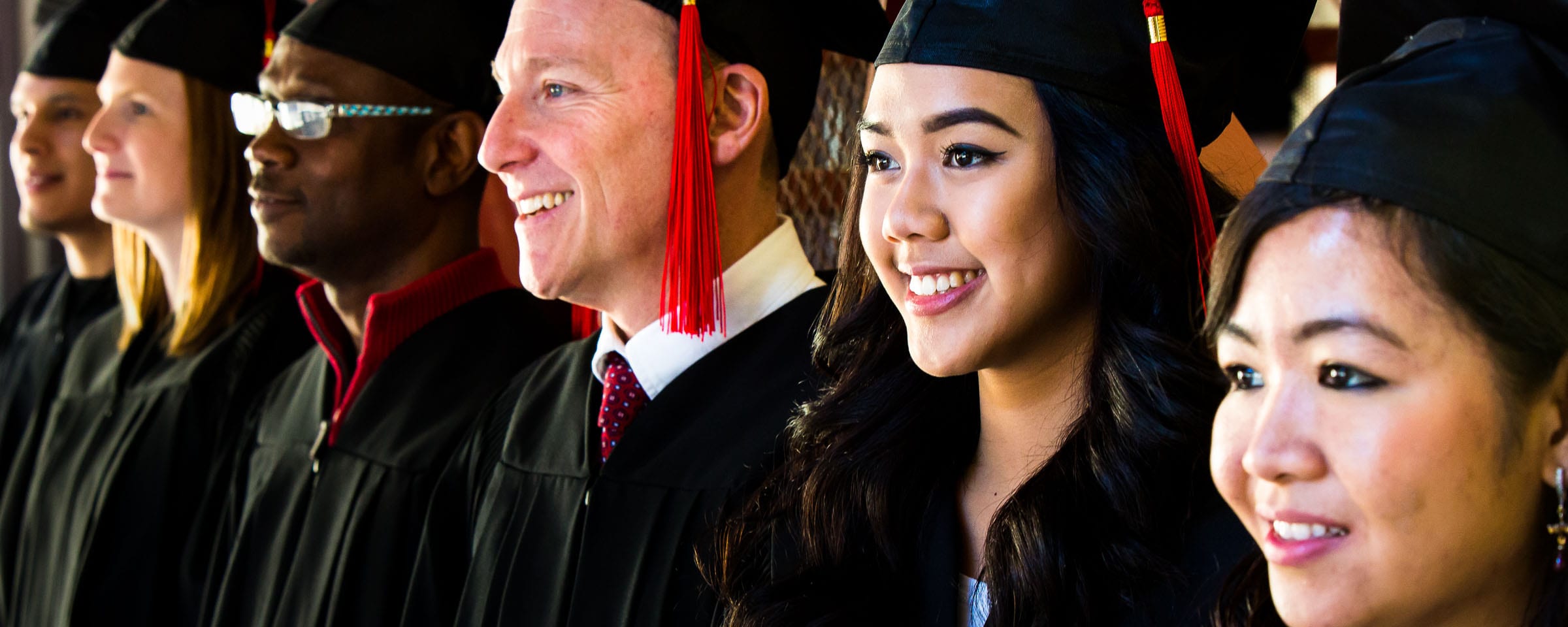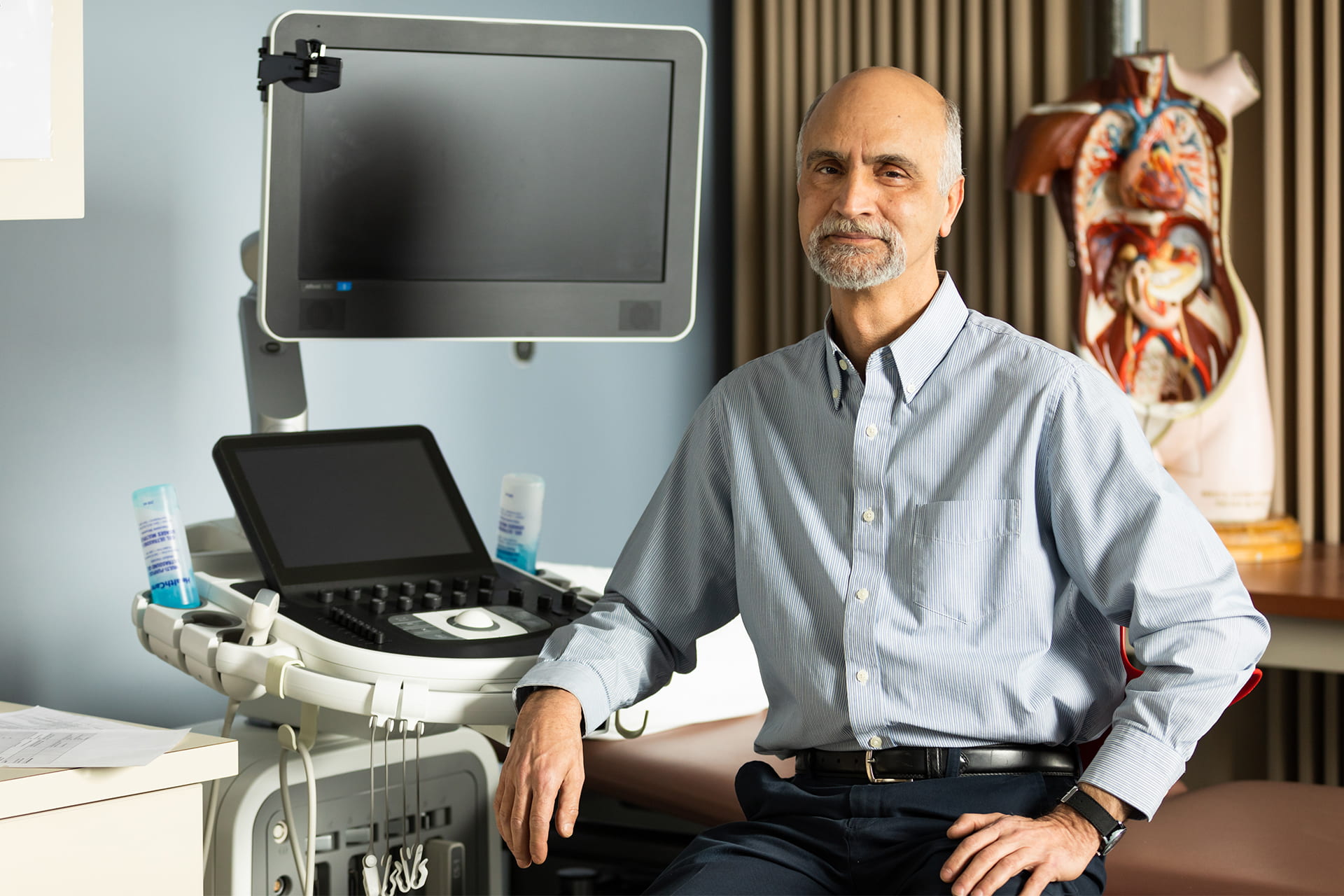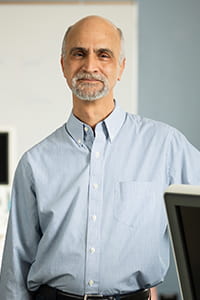Patient-care courses continue to inspire Medical Radiologic Technology grad in decades-long career
It was always Hesam (Sam) Aminian’s plan to work in human health.
Back in Tehran, Iran, he studied dentistry at the National University of Iran (now Shahid Beheshti University), until shortly after the Iranian Revolution when he and his brother fled to Canada as refugees, first arriving in Toronto in July 1984.
Soon after settling in Manitoba, Aminian graduated from Red River College’s Medical Radiologic Diagnostic Technology program in 1990, and two years later, from the Diagnostic Medical Sonography program, which at the time was being taught at Health Sciences Centre (HSC). He continued his studies in ultrasound and was certified in Pediatric Echocardiography in 1993.
Aminian has since gone on to achieve an impressive near-30-year career with HSC’s Department of Pediatric Cardiology.
“[When I arrived in Canada], I thought about starting all over again from scratch in dentistry, but by then my wife and I were married, and I decided to take a shorter route to creating a career for myself,” Aminian explains.
“I looked around and one of the things that stood out to me was the Medical Radiologic program at Red River College. It was one of the main reasons we moved to Winnipeg —so I could apply and attend the course.”
The College was already a well-recognized institution in Canada by then, and the high employment rates of its graduates helped solidify Aminian’s decision to attend the program.
Throughout the program, he studied both the theoretical and practical components of the industry and completed his clinical work experience at Misericordia Health Centre (then General Hospital), where he found the training both rigorous and rewarding.
“It really was a tough program, but in retrospect, I wouldn’t wish for anything less than that. The instructors at both the College and the hospital were some of the toughest instructors I’ve come across. But through that, I found myself learning so much. The level of expectations was high, and thankfully I managed to meet them.”
Now, nearly three decades into the job, Aminian points to one particular program area that has helped him most.
“What I will carry for the rest of my career are the patient-care courses that we took in the program. We learned how to interact with patients and people when they’re not at their best physically or emotionally. It stands out for me as something that carries over to anything I do.”
Aminian’s career as a frontline technologist began in the early 1990s, a time, he says, when the available medical technology was vastly different than what he works with today. The department of pediatric cardiology at HSC was Aminian’s first place of work after graduation, and it’s where he remains today.
“Many of our patients are with us from birth to their twenties. We treat them like family and vice versa. I owe that to the way the department is structured — it’s unique. I know of no other program that runs like this in Canada. I’m not sure it exists anywhere else.”
In 1997, Aminian advanced into a role as technologist supervisor, a position he kept until 2018 before stepping down to prepare for eventual retirement, and one that he says evolved and changed greatly over time.
“I ended up doing so many things … from purchasing medical equipment and supplies, to capital planning and dealing with all the computers and software that were needed to digitize our work. It brought me much closer to understanding the mission of our industry and how we could better achieve it.”
According to Aminian, there are currently four Red River College grads working in the department of pediatric cardiology at HSC. Working alongside so many fellow Medical Radiologic Technology grads doesn’t surprise him at all.
“I like to boast that no other institutions come close to Red River College in terms of how employable its graduates are. The way the College and my base hospital trained me, even though the job market was dry at the time, I knew it would make me among the top candidates when the opportunity presented itself. And it did.”
For any prospective students considering the Medical Radiologic Technology program, Aminian points to one important consideration before applying.
“The demands of this job are for a well-rounded person. You have to know your physics, you have to know your biology, and you have to work well with people — not only patients, but also colleagues, supervisors and physicians.”
If this doesn’t quite sound like you, don’t worry, Aminian says.
“Even if you weren’t necessarily strong in all those areas when you started the program, if you’re open to learning, by the time you’re done, you’ll end up a more well-rounded person.”
When it comes to returning to school for advancement or reskilling, Aminian is a shining example. Between him and his wife, Anahita, the two hold more than half a dozen degrees, certificates and diplomas. Anahita herself holds a diploma in Early Childhood Education, a post-diploma certificate in special needs childcare (ECE), and a certificate in adult education, all from Red River College, in addition to a degree in Developmental Studies from the University of Winnipeg.
“Other post-secondary institutions in Manitoba are very much recognizing what Red River College teaches, and students are coming out knowing a lot. If you have a desire to advance, you’ll hit the ground running if you wish to go further after attending college.”
Profile by Riley Chervinski (Creative Communications, 2016)
Steps for Career Steps
Discover more of our alumni blueprints for career success and get the tools to help plan your next career move.
LEARN MORE

